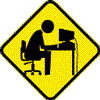CPU: Intel Core 2 6600 @ 2.4ghz
Graphics Card: BFB NVIDIA 8800GTS
Motherboard: ASUS P5B
Memory: 2GB Patriot PC2 6400 RAM
Power Supply: Aero Cool 650W
Hard Drive: 320GB Seagate
Thermaltake Cooling System
Operating System: Windows 7 Ultimate
Here is my problem:
The computer is very fast(could be faster with better RAM!!), has 5 or 6 fans buzzing around in there and the graphics card is great. It runs most every game out there and can handle Adobe CS4 without even missing a step. However, when I am off of the computer for a few hours, and itís on, it will just randomly shut off.
My first thought was that it was too hot, but I check the temperature inside the tower in system setup and itís mid-40ís and I honestly have an amazing cooling system. So I doubt it shuts off because it gets too hot. Then I went and looked at the tower and on the mother board there is a bright green light that is on!? So I have to flip the switch on the power supply and then 3-5 seconds later the light on the mother board shuts off. Then I turn the power supply back on and then turn the computer on and it fires right back up again, no problems at all?!
I just donít know what this could be?? What would cause the computer to shut off, but the motherboard is still on until I turn the power supply off? Is it the graphics card? Does RAM have anything to do with it? I am so clueless and canít afford to go pay a repair shop $70/hr to diagnose it! Any help will be greatly appreciated!!! Thank you.



















 Sign In
Sign In Create Account
Create Account

